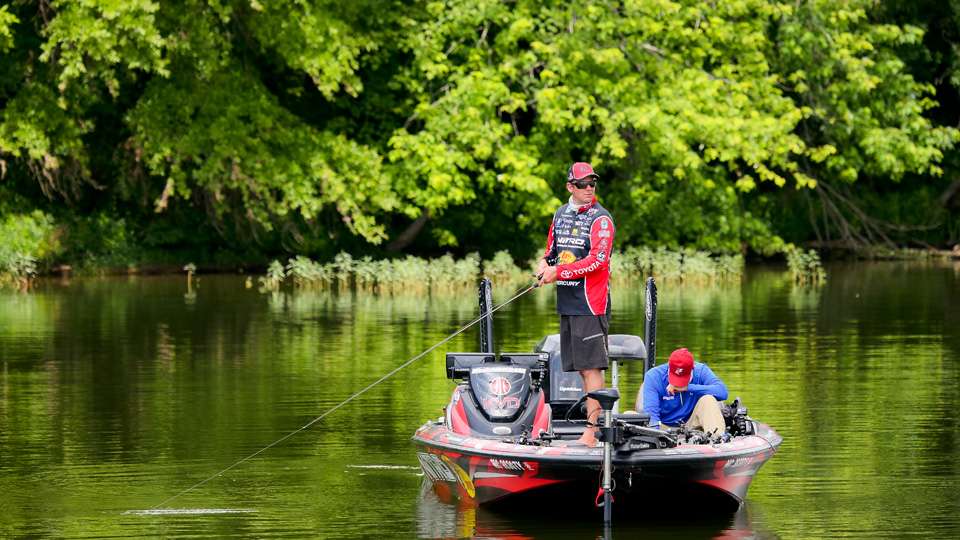
Modern fishing electronics equipped with side imaging (SI) and down imaging (DI) have changed the way I fish.
You can find similar features on other brands, but there have been huge improvements in the past year or so with the Humminbird’s that I use. The new Mega-Imaging feature has truly enhanced the views I get from both DI and SI.
When I’m graphing, I will split the screen into segments, with one set on SI, one on DI and one on 2D sonar (standard sonar). DI and 2D sonar allows me to see what’s under the boat while SI looks out to the sides of the boat.
Most anglers will get by with just one unit, but I prefer two on the bow and two at the console. I will use one graph strictly for mapping to give me a broader picture. If you only have one unit, you can add the mapping view to your split screen equation.
It may seem like overkill to have four big graphs on a boat, but when you fish for a living, it helps tremendously.
Of course, how you use them can make a difference. Here are the parameters I use in my fishing:
Side Imaging: One of the mistakes some people make with side imaging is they set the range too far. Basically, you can narrow the range more when searching shallow water and widen it in deeper water. Think of it like a flashlight beam with the coverage being more defined up close.
So, when scanning shallow flats I keep mine set at about 50 feet, but will go to even shorter range in shallower water. The reason is that boulders, stumps and even fish lying to the side of them become much more defined. So remember: Shorter the range distance, the more detail you will see. The shorter distance also helps you when following a small creek or ditch through a flat.
Some anglers like to have the side imaging transducer mounted on the bottom of the trolling motor, especially if they fish a lot of docks. You can see the dock posts, brush around the dock and oftentimes spot bass holding under the dock. If it’s mounted on the transom, you won’t see what’s there until you get past it.
Also, remember you have to be going on a straight course with the boat, because if you turn you will lose the SI picture momentarily.
DI and 2D sonar: When fishing deeper water, I like to split the sonar screen with one half on DI and the other on 2D. The 2D sonar offers a narrower view of what’s down there while DI offers a broader scan yet shows things in much greater detail. You can see brush, fish in the brush and even your bait when fishing vertically and monitoring DI.
Like SI, DI only works well at slower speeds, such as 3 mph or slower. Speed doesn’t affect 2D sonar.
However, 2D will pick up some false readings, such as if there are a lot of particles or even plankton in the water. When I see clusters of what may appear to be baitfish on my 2D screen, I double check it with the DI, which gives a much clearer view. If it’s bait, they will appear on DI as well.
One final tip: If you are getting interference from the trolling motor, you need to isolate the boat’s wiring. The best way to wire your electronics is directly to the battery, not through an accessory connection. Also, keep your transducer cable separate from electronic cables.
If you’re using older graphs and considering an upgrade, spend a little more cash for DI and SI features. They will save you time on the water when you are looking for Mr. Big.
And that’s all about the attitude!
Kevin VanDam’s column appears weekly on Bassmaster.com. You can also find him on Facebook, Twitter and Instagram.

